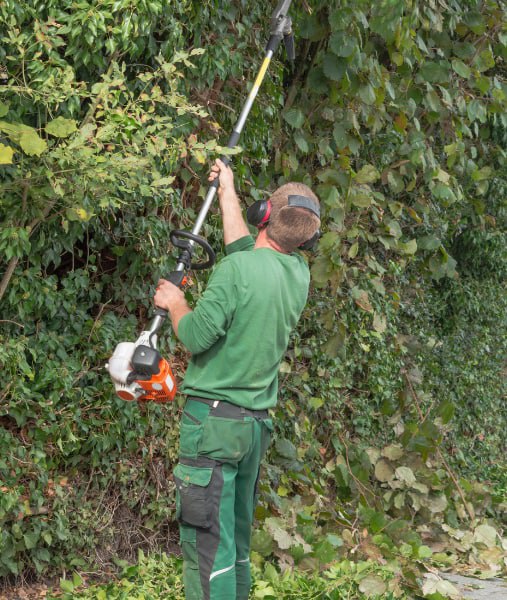
Introduction: As cities like Maidstone expand and urbanise, rising temperatures and heat waves have become a growing concern. One effective and natural solution to counteract the urban heat island effect is strategically planting and preserving trees. In this blog post, we’ll explore the critical role of trees in urban cooling and how they can help mitigate the heat island effect, creating more comfortable and sustainable urban environments.
Understanding the Urban Heat Island Effect
Urban heat islands (UHIs) are areas within cities where temperatures are significantly higher than their surrounding rural areas. UHI result from various factors, including:
- Buildings and Pavement: Urban areas are characterised by vast expanses of concrete, asphalt, and buildings that absorb and retain heat, causing temperatures to rise.
- Reduced Vegetation: Removing natural vegetation for construction reduces the cooling effects of trees and green spaces.
- Heat Emissions: Human activities, industrial processes, and transportation systems release heat, further exacerbating UHIs.
The Role of Trees in Urban Cooling
Trees are natural air conditioners for cities, and their cooling effects can counterbalance UHIs in several ways:
- Shade: Trees provide shade, reducing the amount of direct sunlight that hits surfaces like roads and buildings, which helps lower temperatures.
- Evapotranspiration: Trees release water vapour into the air, which cools the surrounding environment. This process is akin to trees sweating at lower temperatures.
- Air Quality Improvement: Trees filter pollutants from the air, improving air quality and making it more comfortable for residents.
- Energy Savings: Trees can lower energy consumption for cooling buildings by providing shade and reducing indoor temperatures.
- Microclimate Creation: Trees create small microclimates beneath their canopy, which can be significantly cooler than the surrounding areas.
Strategies for Utilising Trees in Urban Cooling
- Strategic Planting: Plant trees strategically in urban areas, especially near buildings, streets, and parking lots, to maximise their cooling effects.
- Selecting Appropriate Species: Choose tree species that are well-suited to the local climate and drought-tolerant to ensure long-term health and survival.
- Urban Greening: Promote urban greening initiatives that focus on increasing tree canopy cover, creating green spaces, and preserving existing trees.
- Maintenance and Care: Regularly maintain and care for urban trees, including pruning, watering, and pest control, to ensure longevity and effectiveness.
- Community Engagement: Involve the community in tree planting and care initiatives to raise awareness and build a sense of responsibility among residents.
Conclusion: Trees play a crucial role in urban cooling and can significantly alleviate the negative effects of urban heat islands. Strategic tree planting and preservation efforts in Maidstone and other urban areas can help create more livable, sustainable, and comfortable cities. By recognising the importance of trees and taking action to integrate them into urban planning and development, we can work towards a greener and cooler future for our communities. Remember, every tree planted is a step closer to mitigating the heat island effect and enhancing the quality of urban life.
Call us on: 01622 234592
Click here to find out more about Maidstone Tree Care
Click here to complete our contact form and see how we can help with your tree’s needs.